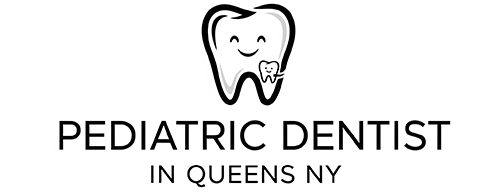When it comes to oral hygiene, toothpaste plays a crucial role in maintaining a healthy smile. However, with the vast array of options available on the market, choosing the right toothpaste can be overwhelming.
To make an informed decision, it is essential to understand the ingredients that make up toothpaste and their impact on oral health. In this article, we will explore the key ingredients to look for and avoid when selecting toothpaste, providing valuable insights to help you make the best choice for your dental care.

The Importance of Toothpaste Ingredients
Toothpaste is not just a minty gel or paste that freshens your breath; it is a vital tool in preventing dental issues such as cavities, gum disease, and tooth sensitivity.
The effectiveness of toothpaste lies in its ingredients, which work together to combat oral health problems and maintain a healthy mouth.
Fluoride: The Hero Ingredient
Fluoride is undoubtedly the most crucial ingredient to look for in toothpaste. It is a naturally occurring mineral that strengthens tooth enamel, making it more resistant to decay caused by acid-producing bacteria. Numerous studies have shown that fluoride toothpaste reduces the risk of cavities by up to 25%.
When selecting a toothpaste, ensure it contains fluoride, as it provides long-lasting protection against tooth decay. Look for the American Dental Association (ADA) seal of approval on the packaging, which guarantees that the toothpaste meets the necessary standards for safety and effectiveness.
Abrasives: Balancing Cleaning Power and Tooth Sensitivity
Abrasives are the gritty particles in toothpaste that help remove plaque and surface stains from teeth. While they are essential for maintaining oral hygiene, some abrasives can be harsh and lead to tooth sensitivity or enamel erosion.
When choosing a toothpaste, opt for one with mild abrasives such as hydrated silica or calcium carbonate.
These ingredients effectively clean teeth without causing excessive wear on enamel or discomfort. Avoid toothpaste with highly abrasive substances like baking soda or activated charcoal, as they can be too harsh for daily use.
Antimicrobial Agents: Fighting Bacteria and Gum Disease
Gum disease, also known as periodontal disease, is a common oral health issue caused by the buildup of bacteria in the mouth. To combat this problem, toothpaste often contains antimicrobial agents that help kill bacteria and prevent gum disease.
Look for toothpaste that contains ingredients like triclosan, zinc citrate, or stannous fluoride. These antimicrobial agents effectively reduce the number of harmful bacteria in the mouth, promoting healthier gums and preventing gum disease.
Ingredients to Avoid in Toothpaste
While there are essential ingredients to look for in toothpaste, there are also certain ingredients that should be avoided due to their potential negative effects on oral health. Here are some ingredients to steer clear of:
Sodium Lauryl Sulfate (SLS)
Sodium Lauryl Sulfate (SLS) is a foaming agent commonly found in toothpaste. While it creates a satisfying lather, it can also cause irritation and mouth ulcers in some individuals. If you have a history of mouth sensitivity or recurrent canker sores, consider opting for SLS-free toothpaste.
Artificial Sweeteners
Many toothpaste brands add artificial sweeteners to enhance the taste and make brushing more enjoyable. However, these sweeteners can contribute to tooth decay and undermine the purpose of using toothpaste. Look for toothpaste that uses natural sweeteners like xylitol, which has been shown to have dental benefits.
Triclosan: A Controversial Ingredient
While triclosan is an effective antimicrobial agent, it has raised concerns due to its potential impact on the environment and the development of antibiotic resistance. The FDA has banned the use of triclosan in hand soaps, but it is still allowed in toothpaste. If you prefer to avoid this ingredient, look for triclosan-free toothpaste alternatives.
Additional Considerations for Toothpaste Selection
Aside from the key ingredients mentioned above, there are a few other factors to consider when choosing toothpaste:
Age-specific Toothpaste
For children under the age of two, it is recommended to use fluoride-free toothpaste to prevent them from swallowing excessive fluoride. Once they reach the age of two, a pea-sized amount of fluoride toothpaste can be used. Additionally, there are toothpaste options specifically formulated for sensitive teeth, whitening, or fresh breath. Consider your specific dental needs when making a selection.
Personal Preferences
Everyone has different preferences when it comes to toothpaste. Some people prefer a gel consistency, while others prefer a paste. Some may enjoy a strong mint flavor, while others prefer a milder taste. Experiment with different brands and flavors to find the toothpaste that you enjoy using, as this will encourage consistent brushing habits.
Summary
Choosing the right toothpaste is essential for maintaining optimal oral health. Look for toothpaste that contains fluoride, as it provides long-lasting protection against cavities.
Opt for toothpaste with mild abrasives to avoid tooth sensitivity and enamel erosion. Consider toothpaste with antimicrobial agents to combat bacteria and prevent gum disease.
Avoid ingredients like SLS, artificial sweeteners, and triclosan, which can have negative effects on oral health. Additionally, consider age-specific toothpaste and personal preferences when making a selection.
By understanding the key ingredients to look for and avoid in toothpaste, you can make an informed decision that promotes a healthy smile and overall oral well-being.

Dr. Mary G. Trice is a renowned pedodontist based in Queens, NY. With an unwavering dedication to children’s dental health. In addition to her clinical practice, Dr. Trice is the writer and manager behind the informative platform pediatricdentistinqueensny.com. Through this site, she offers valuable insights, tips, and resources for parents and guardians, aiming to bridge the gap between professional dental care and everyday oral hygiene practices at home.
